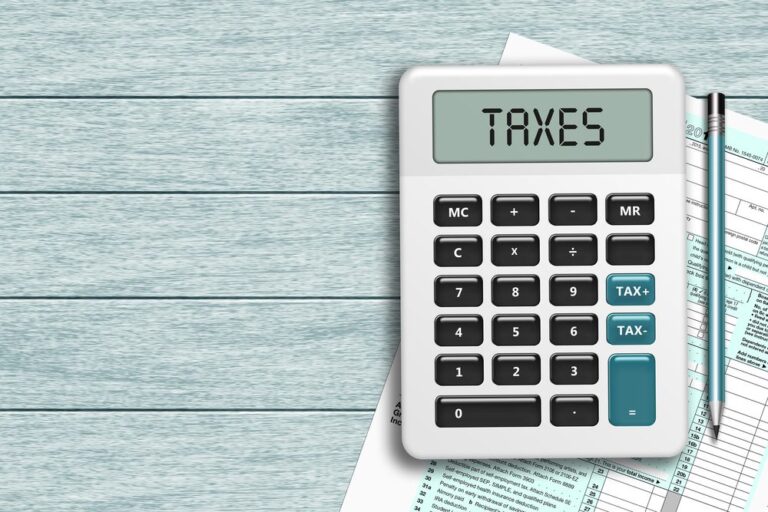Tax season can be as perplexing as trying to understand your dog’s spaz attacks. You’ve filled out the forms, crunched the numbers, and sent everything off to Uncle Sam.
Yet, here you are, camping by the mailbox or hitting refresh on the IRS’s “Where’s My Refund?” page like it’s the newest social media craze.
Each day, the suspense mounts: will today be the day when your tax refund graces your bank account?

Taxpayers often find themselves in a perplexing waiting game after submitting their taxes, wondering when their money will make its grand entrance. They’re armed with their social security numbers, their filing status, and a well of patience, but sometimes that just isn’t enough to quell the anticipation. Will the refund be used for something responsible like paying off debts, or will it fuel a spontaneous trip to a place where no one knows the meaning of “tax code”?
The IRS, a labyrinthine organization where one imagines workers in suits navigating through stacks of paper and screens of data, holds onto these refunds with a mystical sense of timing. Your refund is out there somewhere, moving through the system, hopefully not taking a detour around the Bermuda Triangle. As the days tick by, it becomes the financial pipedream that could turn into a new gadget, a plush pillow top mattress, or even—dare we say it—a start to next year’s tax fund.
Navigating the Twists and Turns of Tax Refunds

The journey to locate one’s tax refund status from the IRS can feel like a treasure hunt—minus the map and the pirate ship. But fear not, this section is crammed with nuggets of wisdom to help taxpayers track down their precious federal tax refund.
The Quest for Your Refund Status
They say patience is a virtue, but when it’s about getting back one’s own money from the IRS, that virtue is severely tested. Taxpayers can start their quest by venturing to the “Where’s My Refund?” tool, a digital beacon provided by the IRS to light the way. By simply inputting their social security number, filing status, and the exact refund amount, an individual can see their refund status materialize before their eyes.
- Less than 24 hours after e-filing? Check for status updates.
- Mailed a paper return? Wait four weeks before embarking on the status-check quest.
Remember, the IRS updates refund statuses once every 24 hours, usually overnight. So, hitting refresh every ten minutes won’t make it appear any faster—like waiting for water to boil, but less exciting.
Cracking the Code: IRS2Go and Other Mysteries
Now, if a taxpayer wishes to track their refund on-the-go as one tracks their pizza delivery, the IRS2Go app is the tax world’s answer to such modern-day desires. This app doesn’t just display refund information in the palm of one’s hand; it adds a layer of mystique by offering tax tips and IRS news, which can range from mildly amusing to nap-inducing.
- Download IRS2Go: It’s available on both the App Store and Google Play.
- Enter your info: They’ll need the same details as on the “Where’s My Refund?” site – social security number, filing status, and the exact refund amount.
This magical portal into the IRS vault of tracking tidbits updates refund status just as frequently as the website does. It might not be a crystal ball, but for a distressed taxpayer, it’s just as enchanting.
The Digital Prowess of E-Filing

In an age where digital reigns supreme, the IRS has embraced technology, turning tax filing into a less formidable task than wrestling with a paper leviathan. Taxpayers can breathe a sigh of relief as the e-filing system flexes its digital muscles, making the process smoother, more accurate, and decidedly less tree-consuming.
From Paper to Pixel: The E-Filing Revolution
Gone are the days of using snail mail to journey your tax returns to the depths of the IRS. E-filing is the superhero of tax submission, swooping in with fewer errors in calculations and a confirmation receipt that whispers sweet nothings to taxpayers’ inboxes instantly. An electronically filed return not only gets processed at lightning speed compared to its paper ancestor, but also paves the way for a faster refunded amount magically appearing in bank accounts.
- Direct Deposit Delights: When taxpayers select direct deposit, their refunded amount sprints into their bank account faster than one can say, “Show me the money!” Over 90% of refunds are issued this way, proving that electronic is the new paper when it comes to speed.
- TIN Triumphs: Every taxpayer has a unique taxpayer identification number (TIN) that becomes the golden ticket for e-filing. No manual transcribing errors here—this number is part of the digital handshake that ensures one’s data is correct and their identity is secure.
- Child Tax Credit Claims: For those claiming the child tax credit, e-filing transforms into a virtual stork, delivering the details directly and accurately to the IRS, minimizing errors and ensuring that the credit is not held up in bureaucratic limbo.
- IRS2Go Mobile Mystique: The IRS2Go mobile app dances onto the stage, offering taxpayers the enchanting ability to track their refunds, make payments, and find free tax preparation assistance. This digital genie offers peace of mind in the palm of one’s hand.
With e-filing emerging as a beacon of the digital age, the IRS has taken a tax tradition and catapulted it into the future, leaving paper and pen as mere relics for storytellers and historians.
Anticipate, Calculate, Exhilarate!
Before they pop the champagne, taxpayers should get acquainted with the thrill of maximizing their returns—because who doesn’t enjoy a fatter wallet?
Maximizing Your Refund: Credits and Withholdings
One might wonder if there’s magic to bolster one’s refund. Alas, it isn’t magic, but savvy strategizing with credits and withholdings. Here’s the scoop:
Credits:
- Earned Income Tax Credit (EITC): This little gem is for the working folks with modest earnings. Eligibility hinges on income and family size. Don’t have a silver spoon? This credit might be your golden ticket.
- Additional Child Tax Credit (ACTC): Have kiddos? They might be more than just adorable – they could cash in up to $1,400 per qualifying child. Just ensure Turbo Jr. hasn’t hit his teen years—children must be under 17.
Withholdings:
- Those W-4 forms are more than just paperwork—they dictate how much tax is withheld from each paycheck. If one’s withholdings are as overstuffed as a Thanksgiving turkey, they might enjoy a plumper refund.
- Unsure about withholdings? A quick chat with an HR rep could shed light on whether it’s time for a W-4 adjustment.
Amended Return:
- Made boo-boos on a filed return? Fear not, for one can mend their tax tangles with an amended return. Just be aware that an amended return is like a slow dance—it takes time for the IRS to bust a move and issue any additional refund due.
One’s due a refund could be joining the party before they know it. Their anticipation builds, they calculate with precision, and then—exhilaration—as they score that sweet refund. Cha-ching!
When Things Get Complicated
One might find themselves in a wacky plot twist straight out of a tax soap opera, where their anticipated tax refund is delayed due to unexpected complications like identity theft or errors in their return.
Plot Twists: Identity Theft, Errors, and Frauds
Imagine if someone else decided to take a joyride with your identity, and they filed for your tax refund before you did. That’s identity theft, and it’s as fun as finding a spider in your shoe. When the IRS detects multiple returns with your Social Security number, they’ll slam the brakes on your refund.
Now, speaking of errors, they’re like the gremlins of the tax world. A simple slip of the pen, or a digital typo, and your tax return could be doing cartwheels of delay. If the IRS uncovers discrepancies, or if they’re just not feeling the whole dollar amount you’ve reported, they’ll put your refund on a timeout.
Some error examples include:
- Incorrect Social Security numbers
- Mathematical mistakes (especially in that whole dollar amount)
- Filing status follies
And then there’s fraud, the supervillain of the tax saga. If they suspect someone’s trying to pull a fast one with fake documents or an overinflated refund amount, the IRS will go full detective mode, and your refund might get stuck in bureaucratic quicksand.
The Treasure Map: State Tax Refunds
If chasing your federal refund is akin to a wild goose chase, then tracking down your state tax refund is like embarking on a treasure hunt without the map. Each state has its own labyrinthine process, and they don’t necessarily communicate with the IRS or follow the same timeline. So, even if the federal refund is sent to you with minimal hiccups, the state refund might take a scenic route.
For those who mailed in a paper return, the journey is even more “adventurous.” Many states encourage e-filing for its speed and efficiency, but if you’ve mailed your state tax return, you might as well pitch a tent and get comfortable.
To check the status of a state tax refund, taxpayers generally need to visit their state’s revenue department website. They should be prepared to provide:
- Their Social Security number
- The tax year
- The exact refund amount
Good luck!








